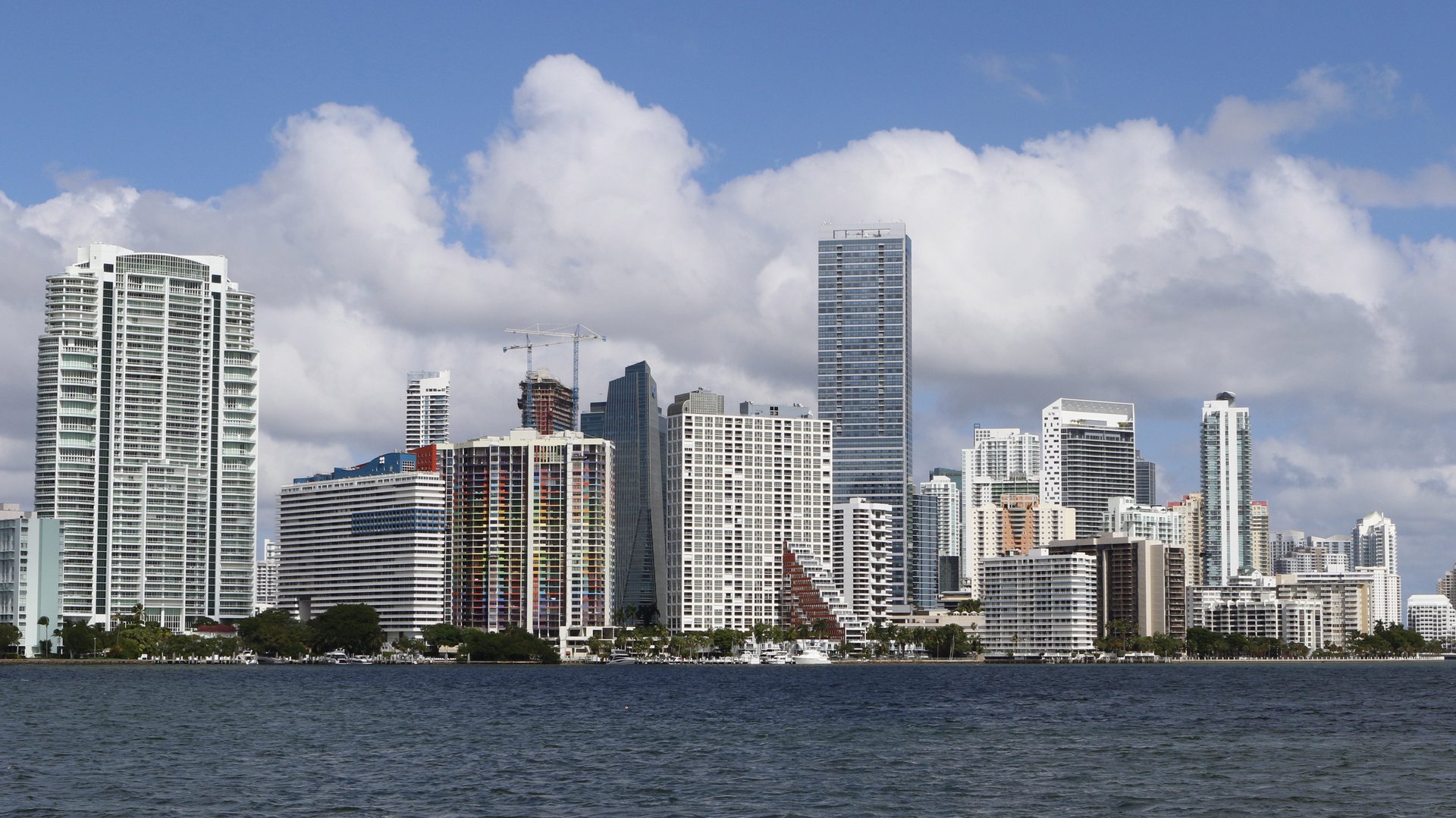A pandemic boom has made Miami the least affordable US city
For buyers and renters alike, the pandemic has made housing a lot more expensive. Compared to median incomes, home prices and rents shot up almost everywhere in the US over the last two years. By some estimates, nowhere more than Miami. The subtropical metropolis is now the least affordable housing market in the US, according to data compiled by the real estate listing aggregator RealtyHop, as housing prices have outstripped household’s ability to pay.


For buyers and renters alike, the pandemic has made housing a lot more expensive. Compared to median incomes, home prices and rents shot up almost everywhere in the US over the last two years. By some estimates, nowhere more than Miami. The subtropical metropolis is now the least affordable housing market in the US, according to data compiled by the real estate listing aggregator RealtyHop, as housing prices have outstripped household’s ability to pay.
In February 2022, the median asking price for a home in Miami reached $589,000, a 13.5% annual increase. A typical family in Miami earning the median income of $43,401 would need to spend nearly 80% of their household earnings on mortgage and property tax payments to afford the median home listed today, according to RealtyHop’s analysis.
New York and Los Angeles have traded places as the least affordable US cities to buy a home for years. Miami has pulled ahead as home prices rise have risen faster there compared to other big cities. And it’s not just celebrities’ waterside mansions driving up Miami real estate prices—even the metro’s working-class enclaves like Hialeah are becoming unaffordable.
Miami’s pandemic boom raises the cost of housing
Miami has long been an expensive housing market, known for its luxury high-rise condos and sprawling suburban mansions. But an influx of wealthy buyers over the past two years sent demand into overdrive. Workers in the finance and tech sectors bought or leased homes in Miami as the pandemic pushed businesses to allow their employees to work from anywhere. Wooed by the city’s sunshine, low taxes, and lax coronavirus restrictions, professionals leaving places like New York and San Francisco have put new pressure on the housing market, widening an already yawning inequality gap between the ultra-wealthy and middle-income earners in the city.
RealtyHop calculated housing affordability for the 100 biggest cities in the US by comparing home sale prices to median incomes to estimate how much of a household’s monthly budget they would have to put towards a mortgage and taxes if they bought a typical house. Conventional wisdom holds that no more than 30% of a household’s gross income should go towards housing. In reality, however, many Americans are having to spend much more—In 2018, 21% of US homeowners were considered “burdened,” meaning they spent more than 35% of their income on housing.
In Miami, as in New York and Los Angeles, median earners would have to spend well above 70% of their income to buy the median house. But during the pandemic, housing costs in Miami have been outpacing these other expensive cities. The price of homeownership in Miami has risen 17% since March 2019, compared to 8% in New York and 5% in Los Angeles.
Miami’s real estate market has been white-hot since the pandemic spread across the US in April 2020. Although new home construction in the city is skyrocketing—housing starts in June 2021 tripled the total from June 2020—demand for housing in Miami has spiked even faster. As a result, the city’s housing inventory is running low and more buyers are making cash offers and driving up the price of homes in bidding wars. Luxury real estate has been especially hot: In December 2021, Ken Griffin, the CEO of the hedge fund Citadel, broke South Florida real estate records when he paid $75 million for a house on Star Island (the celebrity-studded retreat of stars like Jennifer Lopez, Shaquille O’Neal, and Gloria Estefan).
Declining affordability across the US
Miami is only the most extreme illustration of macroeconomic forces driving up home prices across the US. Pent-up demand building for years exploded when the pandemic sent many white-collar workers looking for more space to be able to work from home. At the same time, new construction slowed as labor shortages and supply chain delays for building materials made homes more expensive to build. Lumber prices surged 500% from the previous year in the spring of 2021 as low supply in lumber yards hit increased demand from home builders.
A separate affordability index created by the National Association of Home Builders and Wells Fargo used a different methodology to calculate housing affordability but still found many of the “usual suspects” to be among the least-affordable places in the country: coastal cities like Los Angeles, San Francisco, New York, and Miami were all at the bottom of the affordability ranking. This index analyzed median home sale prices for entire metro areas—not just individual cities—and measured affordability in terms of how many homes in the area’s for-sale market would be within reach for median earners. According to this analysis, the Los Angeles metro area was the least affordable: only 8% of homes on the market were affordable for median earners. The Miami metro area ranked 203rd from the bottom out of 237 areas.
Still, this analysis told the same story for US housing markets as a whole: year over year, homes across the US are becoming less affordable to many Americans as prices increase and income hasn’t kept up.